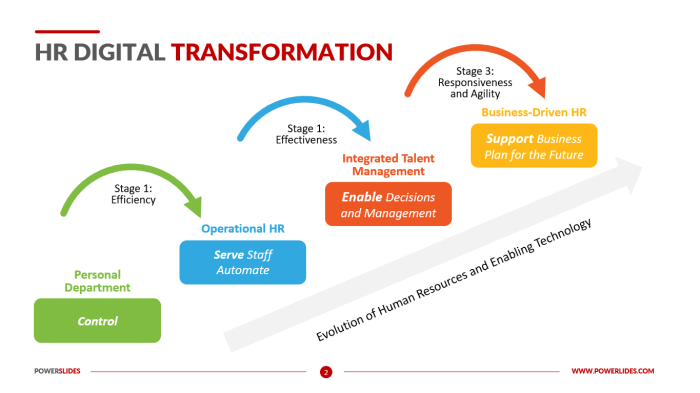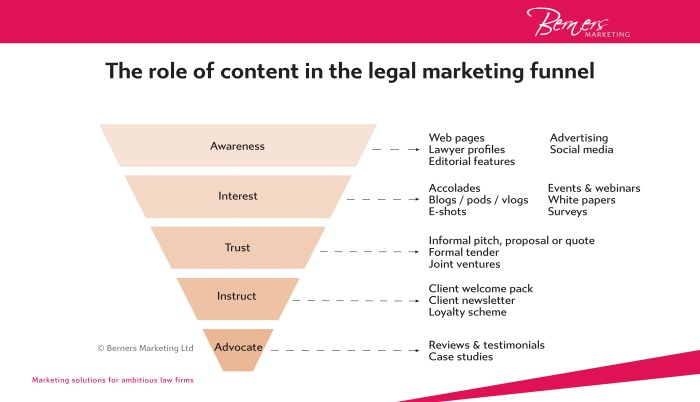HR Digital Transformation Roadmap: 7 Key Phases to Success
Embark on a journey through the HR Digital Transformation Roadmap: 7 Key Phases to Success, exploring the essential steps for achieving success in transforming HR processes.
Introduction to HR Digital Transformation Roadmap

HR digital transformation refers to the process of using digital technologies to streamline HR processes, improve employee experience, and drive business outcomes.
Having a roadmap for HR digital transformation is crucial as it provides a clear plan of action, helps in setting goals, and ensures alignment with the overall organizational strategy.
Importance of Implementing a Structured Roadmap for HR Digital Transformation
- Enhanced Efficiency: A structured roadmap helps in identifying key areas for improvement and implementing solutions that can streamline HR processes, leading to increased efficiency.
- Strategic Alignment: By having a roadmap in place, HR digital transformation initiatives can be aligned with the organization's strategic goals, ensuring that the efforts contribute to overall business success.
- Employee Engagement: A well-defined roadmap can include initiatives focused on enhancing employee experience, leading to higher levels of engagement and satisfaction among the workforce.
- Data-Driven Decision Making: With a structured roadmap, HR can leverage data analytics and insights to make informed decisions, driving better outcomes and continuous improvement.
Phase 1: Assess Current State

During Phase 1 of the HR digital transformation roadmap, it is crucial to assess the current state of HR processes and systems to understand where improvements can be made.
Process of Assessing Current State
Assessing the current state involves conducting a comprehensive review of all HR practices, policies, and systems in place within the organization. This may include evaluating recruitment processes, performance management systems, employee development programs, and more.
Key Performance Indicators
Identifying key performance indicators (KPIs) is essential to measure the effectiveness of current HR practices. These KPIs could include metrics such as employee turnover rates, time-to-fill vacancies, training completion rates, and employee satisfaction scores.
Importance of Stakeholder Involvement
Stakeholder involvement is crucial during the assessment phase as it ensures that the perspectives and needs of all relevant parties are taken into account. By engaging with key stakeholders such as HR professionals, employees, and leadership, a more accurate assessment can be made, leading to more targeted and effective digital transformation initiatives.
Phase 2: Define Objectives and Goals
In Phase 2 of the HR Digital Transformation Roadmap, the focus shifts to defining clear objectives and goals that will guide the transformation journey.Setting SMART objectives for HR digital transformation is crucial to ensure that goals are Specific, Measurable, Achievable, Relevant, and Time-bound.
This framework helps in creating a roadmap that is practical, realistic, and aligned with the overall business strategy.
Significance of Aligning HR Goals with Business Objectives
Aligning HR goals with overall business objectives is essential for the success of digital transformation initiatives. This alignment ensures that HR strategies support the broader goals of the organization, driving performance, productivity, and profitability.
- Improve Employee Engagement: Enhancing employee engagement through digital tools and processes can lead to higher retention rates and increased productivity.
- Enhance Talent Acquisition: Streamlining recruitment processes and utilizing data-driven insights can help attract top talent and fill critical roles efficiently.
- Develop Learning and Development Programs: Implementing digital solutions for training and development can upskill employees and improve overall performance.
- Optimize HR Operations: Automating repetitive tasks and improving HR processes can lead to cost savings and increased efficiency.
Phase 3: Technology Evaluation and Selection
In Phase 3 of the HR Digital Transformation Roadmap, the focus shifts towards evaluating and selecting the right technology solutions to support the transformation process.
Steps in Evaluating HR Technology Solutions
- Identify the specific needs and challenges of the HR department.
- Conduct thorough research on available HR software options in the market.
- Consult with key stakeholders to gather input and requirements.
- Create a list of criteria to evaluate each technology solution against.
- Request demos and trials to test the functionalities and usability of the software.
- Consider the scalability and compatibility of the technology with existing systems.
- Evaluate the vendor's reputation, customer support, and implementation process.
Comparison of HR Software Options
- Cloud-based HRMS: Offers flexibility, scalability, and accessibility.
- Integrated HR suites: Provide comprehensive solutions for all HR functions.
- Best-of-breed solutions: Focus on specific HR areas like recruitment or performance management.
- Open-source HR software: Allows for customization and control over the system.
Criteria for Selecting HR Technology
- Alignment with business objectives and goals.
- User-friendliness and ease of adoption for employees.
- Scalability to support future growth and changes in the organization.
- Data security and compliance with regulations.
- Integration capabilities with other systems and applications.
- Cost-effectiveness and return on investment.
Phase 4: Design and Planning
In Phase 4 of the HR Digital Transformation Roadmap, the focus shifts to designing new HR processes based on the technology selected in the previous phase and planning for their implementation.Designing new HR processes involves mapping out the current processes, identifying areas for improvement, and reengineering them to align with the capabilities of the chosen technology.
This step requires collaboration between HR professionals, IT experts, and other stakeholders to ensure that the new processes are not only efficient but also user-friendly and aligned with the organization's goals.Change management plays a crucial role in planning for HR digital transformation.
It involves preparing employees for the upcoming changes, addressing their concerns, and providing the necessary training and support to help them adapt to the new processes. Without effective change management, the digital transformation initiative is at risk of failure due to resistance from employees or lack of adoption of the new systems.
Importance of Change Management in HR Digital Transformation
- Ensures smooth transition: Proper change management helps in easing the transition from old processes to new ones, minimizing disruptions in operations.
- Increases employee engagement: Involving employees in the change process and addressing their concerns fosters a sense of ownership and commitment to the new ways of working.
- Enhances ROI: By ensuring that employees are fully onboard with the new processes, organizations can maximize the return on investment in the digital transformation initiative.
Examples of Effective HR Process Designs for Digital Transformation
- Self-service portals: Implementing self-service portals for employees to manage their HR-related tasks such as leave requests, benefits enrollment, and performance evaluations can streamline processes and reduce administrative overhead.
- Automated workflows: Designing automated workflows for recruitment, onboarding, and performance management can improve efficiency, reduce errors, and provide real-time insights for decision-making.
- Data analytics integration: Incorporating data analytics capabilities into HR processes can enable organizations to make data-driven decisions, identify trends, and predict future workforce needs.
Phase 5: Implementation and Integration
In Phase 5 of the HR Digital Transformation Roadmap, the focus shifts to the actual implementation and integration of new HR technologies and processes within the organization. This phase is crucial for ensuring a successful transition to the digital HR landscape.
Steps in Implementing New HR Technologies and Processes
- Develop a detailed implementation plan outlining specific tasks, timelines, and responsibilities.
- Provide training and support to employees to ensure they are comfortable with the new technologies and processes.
- Test the new systems thoroughly before full implementation to identify and resolve any issues.
- Gradually roll out the new technologies and processes to different departments or teams to manage change effectively.
- Monitor progress closely and make adjustments as needed to optimize the implementation process.
Challenges Organizations may Face During the Integration Phase
- Resistance to change from employees who are comfortable with existing processes.
- Integration issues between the new HR technologies and existing systems within the organization.
- Technical difficulties or system failures that disrupt the implementation process.
- Lack of adequate training and support for employees to adapt to the new technologies.
- Difficulty in aligning the new HR technologies with the overall business objectives of the organization.
Best Practices for Ensuring a Smooth Transition During Implementation
- Communicate openly and transparently with employees about the reasons for the digital transformation and the benefits it will bring.
- Involve employees in the implementation process by seeking their feedback and addressing their concerns.
- Provide comprehensive training programs to ensure that employees are proficient in using the new technologies.
- Assign dedicated resources to oversee the implementation process and address any issues promptly.
- Celebrate small wins and milestones during the implementation to maintain momentum and motivation among employees.
Phase 6: Training and Change Management
Training employees on new HR technologies is crucial for the successful implementation of digital transformation in HR processes. It ensures that employees are equipped with the necessary skills to effectively use the new systems and tools, ultimately increasing productivity and efficiency within the organization.
The Importance of Training
- Training helps employees adapt to new technologies and processes, reducing resistance to change.
- It enhances employee performance and enables them to leverage the full potential of HR digital tools.
- Proper training can lead to increased job satisfaction and employee engagement.
Managing Resistance to Change
- Communicate the benefits of the new technologies and how they will improve work processes.
- Involve employees in the decision-making process and address their concerns and feedback.
- Provide ongoing support and resources to help employees navigate the changes.
Successful Change Management Practices
- Creating a dedicated change management team to oversee the process and address any challenges.
- Offering individualized training programs based on employees' roles and skill levels.
- Implementing a feedback mechanism to continuously assess the effectiveness of the training and make improvements.
Phase 7: Monitoring, Evaluation, and Continuous Improvement
In the final phase of the HR digital transformation roadmap, monitoring, evaluation, and continuous improvement play a crucial role in ensuring the success and sustainability of the transformation efforts.Monitoring Key Performance Indicators (KPIs) is essential to evaluate the success of HR digital transformation.
KPIs provide measurable data that can indicate whether the objectives and goals set in Phase 2 are being achieved. By tracking KPIs related to employee engagement, productivity, retention rates, and other relevant metrics, organizations can assess the impact of digital transformation on their HR processes and overall business performance.
Role of Feedback Mechanisms in Continuous Improvement
Feedback mechanisms are integral to the process of continuous improvement following HR digital transformation. By gathering feedback from employees, managers, and other stakeholders, organizations can identify areas that need further enhancement or optimization. Feedback can provide valuable insights into the effectiveness of new technologies, processes, and strategies implemented during the transformation journey.
Organizations can use this feedback to make informed decisions and adjustments to ensure ongoing success and alignment with business objectives.
- Establishing regular feedback channels, such as surveys, focus groups, or one-on-one meetings, can help capture diverse perspectives and suggestions for improvement.
- Creating a culture of feedback and open communication within the organization can foster innovation and collaboration, driving continuous improvement efforts.
- Utilizing feedback to identify trends, challenges, and opportunities can guide decision-making and strategic adjustments to HR processes and systems.
Adapting to Changing Needs through Ongoing Evaluation
Organizations must adapt to evolving business needs and market dynamics through ongoing evaluation of their HR digital transformation initiatives. By continuously assessing the effectiveness of digital tools, processes, and training programs, organizations can stay agile and responsive to changing requirements.
Ongoing evaluation allows organizations to identify emerging trends, technological advancements, and best practices that can enhance their HR capabilities and competitive advantage.
Ongoing evaluation enables organizations to pivot quickly, seize opportunities, and address challenges in a rapidly changing business environment.
- Regularly reviewing and updating the HR digital transformation roadmap based on feedback and evaluation results can ensure its relevance and alignment with organizational goals.
- Engaging key stakeholders in the evaluation process can promote buy-in, collaboration, and a shared commitment to continuous improvement and innovation.
- Embracing a mindset of continuous learning and adaptation can position organizations for long-term success and sustainability in a dynamic digital landscape.
Final Review
In conclusion, the HR Digital Transformation Roadmap: 7 Key Phases to Success provides a strategic guide for organizations looking to navigate the complexities of digital transformation in the HR realm.
Common Queries
What is HR digital transformation?
HR digital transformation refers to the process of integrating digital technologies into HR functions to improve efficiency and effectiveness.
How can organizations benefit from implementing a structured roadmap for HR digital transformation?
Implementing a structured roadmap for HR digital transformation can help organizations streamline processes, enhance employee experience, and align HR goals with overall business objectives.
What are some examples of objectives that can be defined during the Define Objectives and Goals phase?
Examples of objectives include improving recruitment efficiency, enhancing employee engagement, and reducing turnover rates.
What is the role of change management in planning for HR digital transformation?
Change management plays a crucial role in preparing employees for transitions, minimizing resistance, and ensuring successful adoption of new HR technologies.
How can organizations monitor the success of HR digital transformation?
Organizations can monitor the success of HR digital transformation by tracking key performance indicators (KPIs), gathering feedback, and continuously evaluating processes for improvement.




